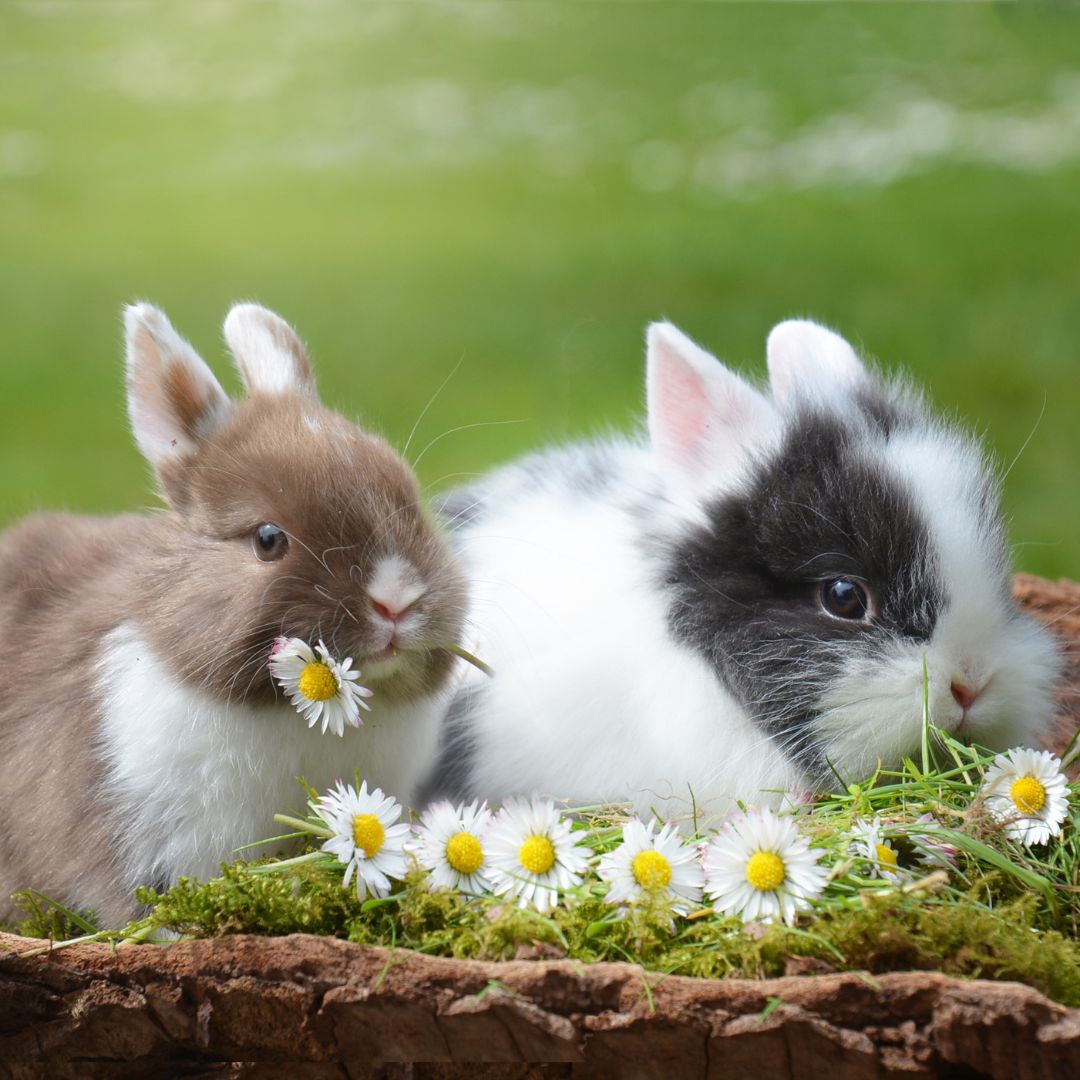Tips for a Smooth Transition: How to Introduce a Dog and a Rabbit
Although introducing a dog and a rabbit can be difficult, it can also be effective and gratifying with the correct planning and patience. Here are some pointers to make the shift go smoothly:
1. To begin, introduce the animals in separate, unbiased areas. This will reduce the possibility of either animal sensing danger as they get used to each other's scent and presence.
2. Give the animals time to gradually adjust to one another's presence. Gradually bring them closer together after enabling them to initially glimpse one other from a distance.
3. Keep an eye on all animal encounters. The animals will be kept quiet and any possible confrontations will be promptly resolved thanks to this.
4. Give the animals lots of things to divert their attention. The likelihood of the animals getting bored or hostile can be decreased with the use of toys, food, and other activities.
5. Ensure that each animal has a separate area. They will feel safer as a result, and territorial conflicts will be less likely.
You may help ensure a seamless transition when introducing a rabbit and a dog by paying attention to these suggestions. You can establish a secure and peaceful habitat for both animals with time and consideration.
The Advantages and Disadvantages of Owning a Dog and a Rabbit Together
Both pets and their owners may benefit from living with a dog and a rabbit in the same home. Before deciding to bring both animals into the house, it is crucial to weigh the benefits and drawbacks of the scenario.
The main advantage of keeping a dog and a rabbit together is that they can provide friendship for one another. Given their sociable nature, rabbits can develop close relationships with other animals, even dogs. Both animals may benefit from this because it might help them feel less stressed and more secure. Having two animals at home can also give the owner twice as much love and attention.
On the other hand, residing with a dog and a rabbit has some possible disadvantages. Given their natural predatory tendencies, dogs might regard bunnies as prey. This can result in risky circumstances since the dog can want to chase or even harm the rabbit. Furthermore, just like dogs, rabbits can be quickly startled by loud noises or sudden movements.
It is crucial to take the required procedures to guarantee the security of both animals. This entails giving the rabbit a safe enclosure that the dog cannot enter as well as plenty of room to roam and explore. Furthermore, it's critical to show both animals a lot of love and care since doing so can prevent any potential hostility.
In general, having a dog and a rabbit in the same home can be rewarding for both pets and their owners. To maintain the security of both animals, it is crucial to weigh the dangers and implement the appropriate safety measures. Both animals can develop a close relationship and offer each other companionship and love with the correct care and attention.
What to Do If Your Dog and Rabbit Aren't Get Along
It might be challenging for pet owners when a dog and a rabbit do not get along. It is crucial to take the required actions to guarantee the security of both animals and to foster a tranquil environment. Here are some suggestions for what to do if your dog and rabbit are at odds:
1. Separate the animals: Separating the animals is the first stage. By doing this, the possibility of harm will be decreased and both animals will be protected. The animals must be kept in separate rooms or parts of the house.
2. Introduce them gradually: After the animals have been split apart, it is crucial to introduce them gradually. Start by letting them to distantly observe one another. Once they are at ease with one another, gradually widen the space between them.
3. Provide diversions: It's crucial to offer diversions when introducing the animals. This can involve providing the animals with toys, food, or other amusements to keep them occupied and apart from one another.
4. Watch interactions: When the animals are together, it's crucial to watch their exchanges. This will make it easier to verify that the animals aren't acting aggressively.
5. Train the animals: Training can help to lower the likelihood of violence in the animals. It may be more tranquil if the animals are taught simple commands like sit, remain, and come.
Pet owners can aid in establishing a tranquil environment for their dog and rabbit by using the advice in this article. It is crucial to keep in mind that it could take some time for the animals to get along, but with persistence and patience, a harmonious relationship between the two creatures is achievable.
How to Teach Your Dog to Respect the Space Around Your Rabbit
To keep your dog safe and content, it's crucial to train him to respect your rabbit's area. Bear in mind that dogs and rabbits have different needs and behaviors, and it is your responsibility to make sure that your pet interacts with other animals in a courteous and safe manner.
Establishing a secure habitat is the first step in teaching your dog to respect your rabbit's space. Make certain that your dog cannot get the cage housing your rabbit. Make sure your dog is always under close supervision if your rabbit is permitted to roam freely. It is crucial to put a barrier between the two animals, such as a fence or baby gate, if your dog is not being watched.
Teaching your dog to respect your rabbit's space is the next stage. Beginner commands for your dog to learn are "sit," "stay," and "leave it." Before letting your dog engage with your rabbit, make sure he is familiar with these commands. Make sure to lavish your dog with praise when he obeys your directions when he is around your bunny.
It's crucial to train your dog to treat your bunny gently. It can really hurt your rabbit if your dog is overly rough with it. When your dog is kind and courteous, be sure to compliment him often.
Finally, it's critical to keep in mind that dogs and rabbits have various needs and behavioral patterns. To keep your rabbit occupied, be sure to give him lots of toys and places to hide. Give your rabbit a secure location to withdraw to if he feels anxious or overburdened.
You can make sure your dog and rabbit can live together securely and peacefully by following these instructions. You may teach your dog to respect your rabbit's space by being patient and consistent, resulting in a secure and contented environment for both animals.

Detecting Compatibility and Conflict in Rabbit and Dog Body Language
Recognizing the indications of harmony and discord is crucial when interpreting the body language of dogs and rabbits. Owners can make sure their pets are secure and content by being aware of these symptoms.
Dogs and rabbits can get along, but it's crucial to comprehend their respective body language. Dogs and rabbits who get along will frequently act relaxed and at ease around one another. While the dog may be seen wagging its tail or reclining down, the rabbit may be observed grooming itself or investigating its surroundings.
On the other side, if there is a conflict between dogs and rabbits, aggressive behavior may be shown. The dog may be heard barking or growling, and the rabbit may be seen pounding its hind legs. Additionally, the dog may be observed raising its hackles, while the rabbit may be seen hunching over and flattening its ears.
It's crucial to remember that dogs and bunnies can exhibit anxiety or fear behaviors as well. The dog may be cowering or avoiding eye contact, while the rabbit may be spotted shivering or hiding.
It's crucial to keep an eye on how bunnies and dogs interact to make sure they get along. It is preferable to separate the animals and provide them with their own place if aggressive or fearful behaviors are seen. To keep both animals mentally and physically occupied, it's also crucial to give them lots of exercise and enrichment activities.
Owners may make sure their pets are secure and content by becoming familiar with the body language of dogs and bunnies. Owners may make sure their pets get along and receive the best care possible by being aware of the warning signals of compatibility and conflict.
